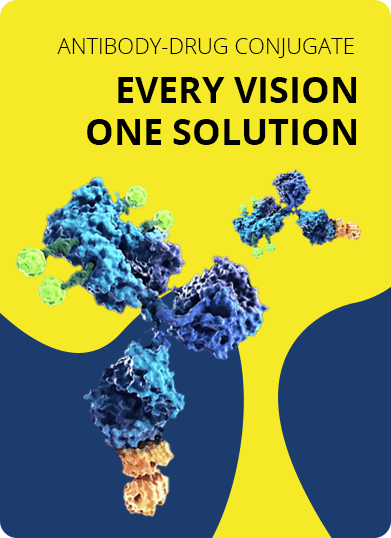- Home
- ADC Development
- DrugLnk™ Custom Linker-Payload Synthesis
- Drug Module Synthesis
- Inhibitor Synthesis
- Oligomycin-Oxidative Phosphorylation Inhibitor Synthesis
Oligomycin-Oxidative Phosphorylation Inhibitor Synthesis Service
Creative Biolabs has established an advanced "DrugLnk" platform for antibody-drug conjugates (ADCs) preparation. With extensive experience in toxin chemistry and full organic synthesis, we provide highly customized strategies for the development of ADC and other targeted antibody therapeutics using oligomycins and its derivatives as payloads.
Oligomycin and its derivatives belong to the macrolide spiroketal antibiotics superfamily. They were initially derived from gram-positive bacterium Strepomyces diastatochromogenes and contain three major isoforms, namely oligomycin A, B, and C. The structure and molecular configuration of oligomycin B was first resolved from data by a combination of spectroscopy and X-ray crystallography, while that of oligomycin A and C were later solved by chemical interrelation of their individual degradation products with those derived from oligomycin B. Oligomycins play an important role in the inhibition of oxidative phosphorylation and they serve as specific inhibitors in decoupling of respiration and phosphorylation. Based on their unique action sites, oligomycins are widely exploited in studies of the mechanisms of various mitochondrial processes and the function of oligomycin-sensitive ATP synthases.
Oligomycin Mode of Action (MOA)
Oligomycins are cytotoxic molecules that have been shown to suppress oxidative phosphorylation in mitochondria by inhibiting ATP biosynthesis. They contain a 26-membered macrocyclic lactone with 17 stereocenters, among which nine are located in the propionate derived region (C4-C14), while the other eight in the spiroketal fragment (C20-C34). Oligomycins exert their mode of action by the decoupling of the F0 and F1 factors in ATP synthase complex, which play important roles in promoting proton transfer via the inner mitochondria membrane. In this MOA, oligomycins form a complex with the oligomycin-sensitivity-conferring protein (OSCP), a protein located in the stalk between the F0 and F1 factors. The oligomycin-OSCP complex then induces the oxidative phosphorylation suppression. Thus, other than their appealing cytotoxicity, oligomycins are also potent biological probes for the investigation of oxidative phosphorylation.
Oligomycin-based ADCs
ADCs enable the accurate delivery of cytotoxic agents into targeted cancer cells, therefore reducing non-specific cellular cytotoxicity by antibody mediated specific recognition of tumor antigens. Toxin payloads are the essential part of therapeutic ADCs. As a strong inhibitor of the mitochondrial ATP synthase, oligomycins show highly potent cytotoxicity, a feature rendering them as excellent agents to be exploited as an ADC payloads. Scientists at Creative Biolabs are confident in offering customized oligomycin-ADC development services with optimal conjugate strategies and linkers.
With our well-established "DrugLnk" organic synthesis platform, the experienced scientists here at Creative Biolabs are dedicated to help you develop oligomycin-linker complexes using readily available or customized linkers for antibody conjugation in a timely and cost-effective manner. Our customarily tailored services and high quality products will contribute greatly to the success of your projects.
Creative Biolabs also provides other various services regarding ADC development. Please feel free to contact us for more information and a detailed quote.
For Research Use Only. NOT FOR CLINICAL USE.

Online Inquiry
Welcome! For price inquiries, please feel free to contact us through the form on the left side. We will get back to you as soon as possible.
